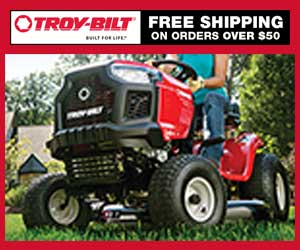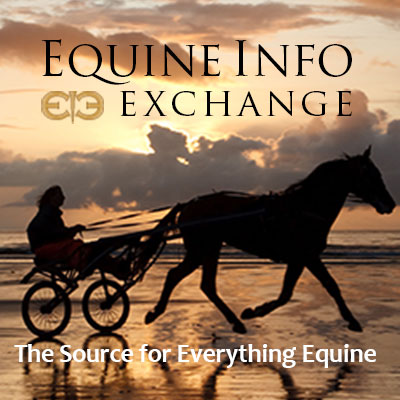Tack & Farm
Our Tack & Farm section features an Apparel section to find both practical and fashionable riding attire. If you ride English & Western or Race, many sources are available in the Tack section.
Building a barn? Need an architect for your equine dream home? Find one in Barns & Stalls.
Have a hungry horse? Of course you do! Find a place to buy your feed and tuck your horse in at night in the Bedding & Feed section. Looking for a place to keep your horse? You can find it in the Horse Boarding section. Keep your horse happy and beautiful with resources in our Grooming section.
Traveling? Find a Shipping company or Horse Sitting service if your horse is staying home!
Running and maintaining a farm or stable is a continuous effort, and to help find products or tools you need, please see our Equipment, Fencing and Management Tools sections.
Seeking Services? Find financial and tax expertise in our Accounting section. Companies who will help protect your investment are found in the Insurance section. For those who want legal advice about purchasing, liability, and other issues, please look at the Equine Law section to find an expert. Build and promote your business with teams from Marketing / Videography / Web Design.
Do we need to add more? Please use the useful feedback link and let us know!
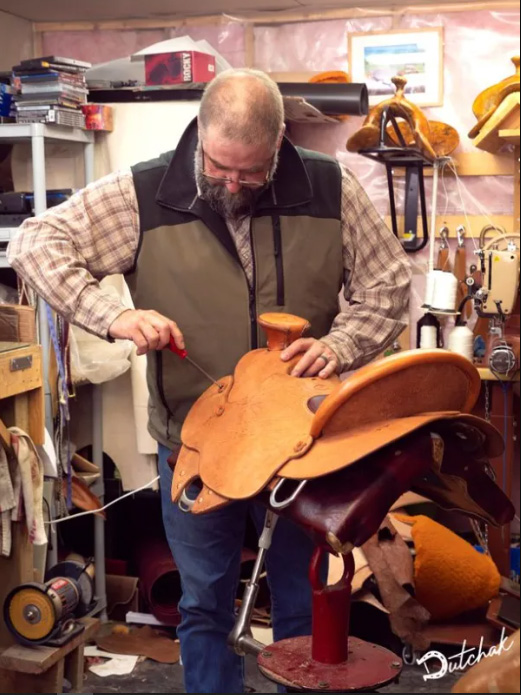
by Nick Pernokas
The sweeping Alberta plains epitomize the West. As you travel the lonely roads east of the Rockies in this vast country, you feel that you could be in the background of a Charlie Russell painting. You wonder about the people who settled this beautiful country. You might stop in a little town south of Calgary to stretch your legs or get some gas. If that town is High River, you could meet a man whose great grandparents were very important to the taming of this soil.
In 1900, Steve Mason’s great grandfather, Levi Bradley, and his brother opened Bradley’s Harness Shop in High River, Alberta. A majority of their work was harness, but they also made saddles. Eventually his son, Lou Bradley, took over the business. When Steve Mason was in high school, his grandfather, Lou, gave him some leather stamping tools and he began to do some leatherwork. When Steve was 16, he wanted to learn more about leatherwork, so he sought out Matt Eberle, another saddle maker in High River. Unfortunately, the mentorship didn’t work out at the time.
“I was just sort of a dumb kid. He thought I knew something and I didn’t know anything,” recalls Steve.
When Steve got out of high school, he started cowboying, something that he’d always enjoyed. In 1989, his grandfather invited him to ride down to Sheridan, Wyoming, with him. Lou was going to King’s Saddlery to get some ropes for his store, Bradley’s Western Store and Saddlery. Steve told Don King and John King about his interest in leatherwork, and they invited him to go to work for them. For the next six months, Steve worked in the King’s repair shop. That was followed by six months of working downstairs in the saddle shop with John King.
After his apprenticeship with King’s, Steve returned to High River and went to work at his grandfather’s shop. A couple of years later, Matt Eberle came in the shop and looked at one of the saddles that Steve had built.
“He came upstairs and said, “Hey kid, I think you’re ready to learn something. Be at my shop at five.”
Matt ended up becoming a great friend and mentor to Steve. He taught Steve how to install an all-leather ground seat and the philosophy behind it. In 1992, Steve’s grandfather sold Bradley’s and shortly after that, Steve moved his shop out to his own house.
In the late Nineties, a Tincher Creek, Alberta based saddlemaker, John Visser, was contracted by Dale Harwood to build the Ray Hunt saddles. John hired Steve to help him. The next two and a half years became not only a steady paycheck for Steve, but a rewarding period of self improvement. John and Steve went to Dale’s shop in Idaho, to learn the fine points of what Dale wanted. Not only was Dale a great saddlemaker, but he was a master of efficiency. John and Steve brought a notebook back with them that they called the “Harwood Bible.” After that, they worked out of John’s shop.
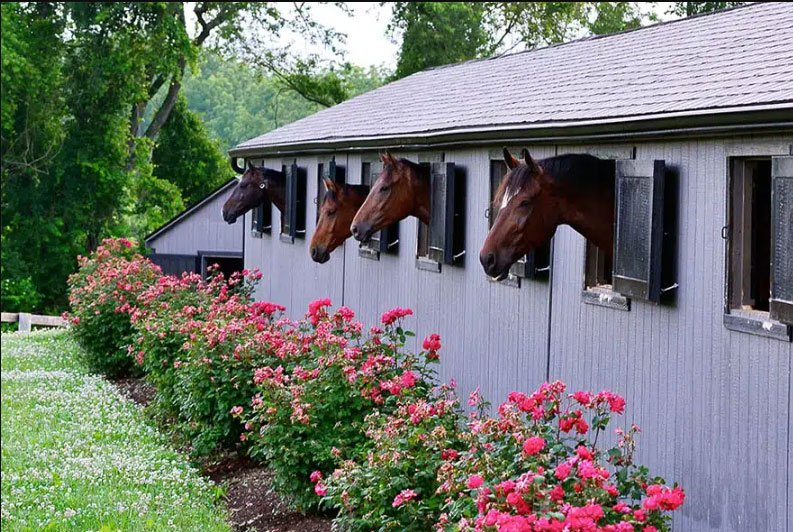
by Nikki Alvin-Smith for Horizon Structures
If you are lucky enough to own a horse property, there is a good probability that you have considered adding ‘just one more horse’ to your equine population. The likelihood of temporary overcrowding of horses on your property doesn’t intimidate most horse buyers from going right ahead and adding another mouth to feed.
When you are a passionate horse person, the temptation to buy another horse is always on the horizon. There are so many reasons to buy another horse. Perhaps your present mount is not up to par and you are certain that a new horse would solve the training issue you are facing; your trainer doesn’t think your horse has the potential to go further in his career; placement of an emotional bid to take home a poorly fed rescue horse abandoned at the kill pen; a colleague offers an opportunity to buy their horse that you know firsthand offers a good ride; a ‘deal too good to miss,’ that pops up when you spend too much time browsing through social media platforms or even access to a so-called ‘free’ horse.
The additional mouth to feed and house may begin as a temporary notion, with the plan to sell off another member of the existing herd or be bought home as a horse in transition that will simply be trained up and moved on.
Wherever the extra horseflesh comes from and for whatever reason, one thing is almost certain – if there is an extra stall available on your property it is likely to be filled quickly.
If existing horse accommodation on the property is not a viable option for provision of shelter for the animal, then adding another structure to the property may be necessary.
The property may already be overcrowded with horses and the extra ‘new’ horse may just be another part of a pattern of overstocking the property.
What to do? Here are some budget barn building solutions to add extra stall space.
Renovate. Repurpose. Refit.
Begin by taking stock of all the existing structures on the property to identify any options to renovate or repurpose a building for horse stabling.
Rehabbing a cow barn or garage structure may be viable but remember to carefully consider the real costs of the retrofitting necessary to safely stable a horse. For example, a low ceiling dairy barn with concrete stanchions is going to take a massive amount of time and money to renovate. There is likely a need to excavate dangerous concrete manure channels, mitigate the likely uphill grade of the stanchion floors and elevate the ceiling height for the horse’s comfort and safety.
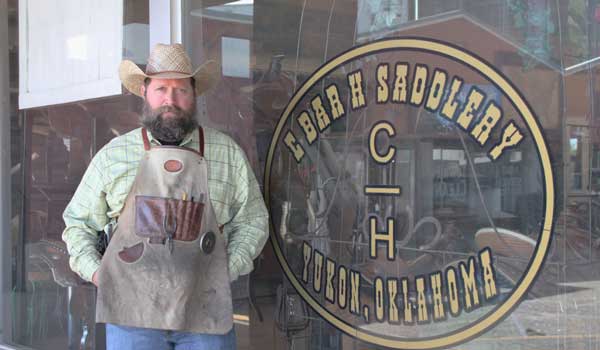
by Nick Pernokas
The June heat came off the tarmac in shimmery waves outside the cattle pens at the Oklahoma City stockyards. It was just another sale day, and the cowboy enjoyed moving the cattle up the alleys on horseback after they were sold. It was just a part-time job, but it let him get out and do a little cowboying. When his sweaty mare tired, the cowboy borrowed another mount. He changed the saddle over to the gelding at his stock trailer. Both horses were tied next to each other and the cowboy ducked under the gelding’s neck to adjust his breast collar. In the slow-motion unfolding of events that is familiar to any horseman that’s been in the wrong place at the wrong time, the gelding set back. The lead rope was stretched taut from horse trailer to sitting horse, almost to the breaking point. Almost. The horse rebounded up the lead with both feet in the air in front of him. One foot caught the cowboy over his left eye, breaking his neck. He was able to roll under the trailer and push himself with his feet to the back of the trailer.
“I couldn’t feel my arms or my legs,” remembers Clinton Hole.
Unable to see out of his blood-filled left eye, Clinton laid on the ground and shouted weakly for help. A truck driver, who was filling out paperwork in the parking lot, heard him and came to his aid.
Clinton’s father, Rollin, was a pastor. Originally from Indiana, Rollin traveled the rural areas of Kansas and Oklahoma. Many times, Clinton rode along with him and this gave him his first taste of the farming and ranching community.
When Clinton got out of high school in Newton, Kansas, in 1991, he discovered the world of bull riding. Clinton competed in regional associations like the Central Plains Rodeo Association. Clinton earned his nickname, “Doc,” on the rodeo circuit because he bore a resemblance to Doc Holliday in the film Tombstone. Between buck outs and rodeos, Clinton realized he enjoyed fixing gear for his fellow bull riders.
Clinton began hanging around at a local horse trainer’s place. The trainer trained western pleasure horses so Clinton was exposed to a new discipline. Clinton volunteered to chip in with the chores and in return he was given a few lessons. He also began to develop more of an appreciation for saddles.
Clinton rode bulls for about eight years. By now, he had a commercial truck driving license and was driving for a local company during the week and rodeoing on the weekends. In 1998, Clinton decided to quit a job driving heavy equipment and go to horse shoeing school in Purcell, Oklahoma. Clinton liked Oklahoma so when he hung out his shingle as a horse shoer, he moved to Kingfisher, Oklahoma, where his dad was living. He also began starting a few horses. One of these was a nice mare that a friend had given him. Clinton got her used to guns because he wanted to be able to take her hunting. A chance invitation to a mounted shooting practice proved that Clinton’s training was sound. The mare took to the pair of 45’s being fired off her back immediately. Soon Clinton was successfully competing in mounted shooting competitions. In 2004, he was the Oklahoma Men’s State Champion in mounted shooting. A national and world championship soon followed.

In 2005, Clinton was shoeing horses in Bethany, Oklahoma, at the Southern Nazarene University. He began dating Mindy, who was one of the managers of the horse program there. Mindy had started out riding English and jumping. At SNU she coached the Intercollegiate Horse Show Association team.
In 2006, they were married. Clinton started doing a little leather tooling with some old Tandy tools. He also repaired a few saddles.
“I rode my share of junk early on and started learning what was good and what wasn’t.”
In 2007, Clinton decided that he’d like to learn how to build a saddle. He searched on the internet for a school that would fit in with his horseshoeing schedule. Don Atkinson, a saddlemaker in Kerrville, Texas, offered a two- or three-week course where a student could build a saddle. After an hour-long phone conversation, the two men clicked. Clinton headed to Kerrville.
“Walking into his shop was like walking back in time,” remembers Clinton.
Within three weeks, under Don’s guidance, Clinton had built his first saddle and had worked on his tooling as well.
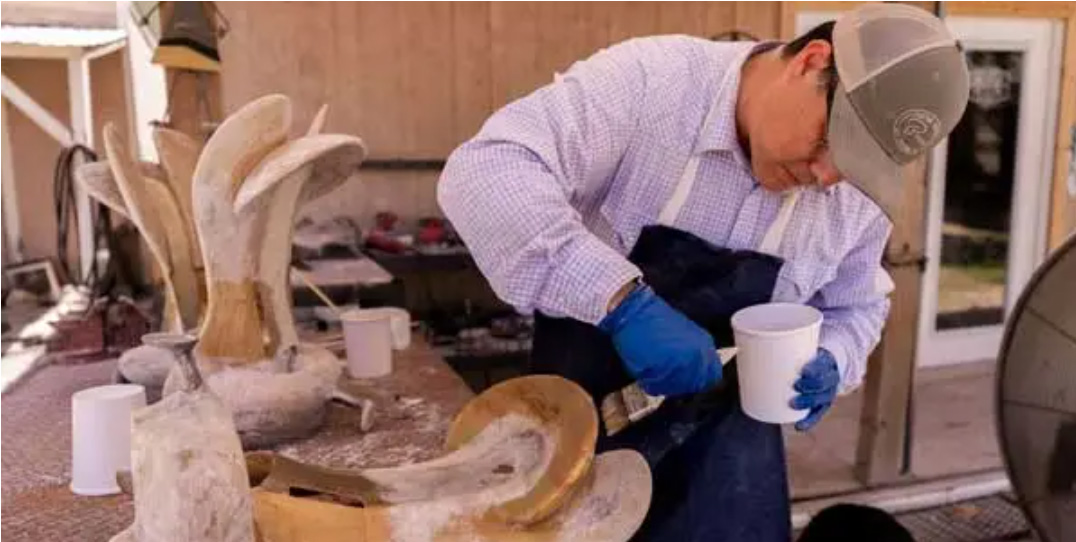
by Nick Pernokas
Brandit Franco grew up in the heart of Florida’s cowboy country. The family business was starting colts and training ranch horses. Brandit’s father, Sam Franco, took a lot of horses to ride that weren’t making it in someone else’s training program. Sam trained everything from Quarter Horses to wild Mustangs in the Seventies and Eighties. Brandit grew up working cows in southern Florida, around Okeechobee and Kissimmee, which is a different type of cowboying then most people visualize in the American West.
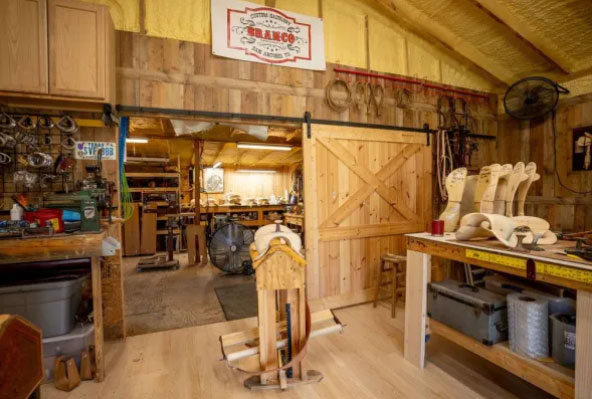 />
/>
“I was born into it,” remembers a 47-year-old Brandit. “I cut my teeth dragging cattle out of the swamps.”
A lot of Brandit’s youth was spent in north central Florida. Sam was an ex-military man though and he was a wanderer. He trained horses all of his life, but he would move from one horse training job to another.
“He followed where his heart told him the horse business was,” says Brandit.
Brandit helped his dad with the horses and learned to ride and break them. Like many cowboys, Sam knew how to fix a saddle and tack when it was necessary.
“We weren’t rich folks by any means so we had to do our own leatherwork.”
Brandit’s first job in leatherwork was setting rivets for his dad. Brandit eventually built a few saddles with Sam, but they were pretty plain, working saddles.
The Franco family moved from Florida to the Mineral Wells, Texas area in the mid Eighties. They were only there for a few years, but Sam was friends with famed all-around cowboy Ed Workman. Ed trained horses at his indoor arena just outside of town and Brandit was able to learn how to rope calves from him. But, Brandit’s first love was competing in the saddle bronc and bareback bronc riding events and the roping never replaced that.
Brandit’s family moved to New Mexico in 1993, which was his final year in high school. As a senior, he rode bareback broncs at the high school rodeos, but a back injury forced him to hang up his rigging for good after that. After that, Brandit’s bronc riding was limited to the horse training kind.
“My dad said that if I wanted to ride broncs, I didn’t have to do it for a buckle. He had plenty for me to ride right at the house.”
In 1994, the family made their final move to San Antonio, Texas. Sam kept training outside horses and he also had a small leather repair shop.
- Big-Small World of Leathercraft, South African Edition
- Overcoming The Challenges of Moving Horse and Home
- DND Leather – Where Beauty and Function Come Together
- Tanner Custom Leather
- Why Do Horses Wear Turnout Rugs?
- Horizon Structures Presents Series: Making Sense of Barn Building Plans
- Horizon Structures Presents Series: Is Your Horse Barn Wearing the Right Hat?
- The Not-So-Great Indoors
- Seeking a New Spot for Your Horse? Need and Overnight Horse Motel? Look No Further, We've Got This!
- Horse Boarding - Checklist!






